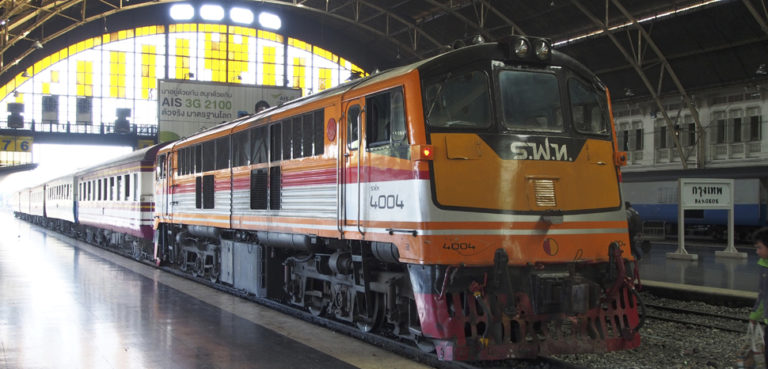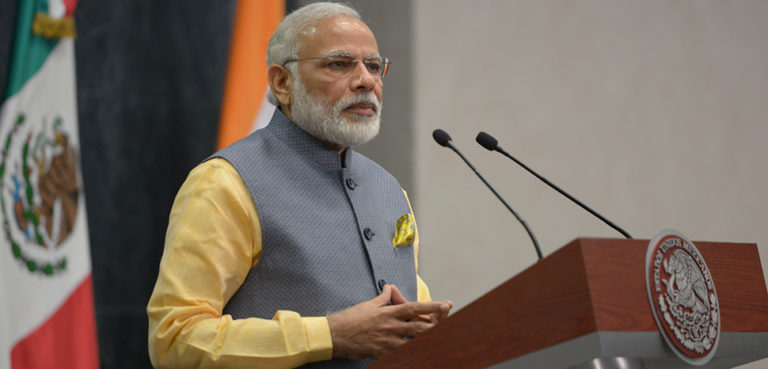Around mid-August, the final tracks will be laid on a 420 km high-speed railway in Laos, enabling the first trains to be tested on the Chinese-built line. Work on the project began in 2016, seeking to link the southern Chinese city of Kunming with Laotian capital Vientiane, as part of Beijing’s wider vision for an eventual pan-Asian railway stretching southward to Singapore. A central project in Xi Jinping’s Belt and Road Initiative, the track is also part of Laos’ strategic vision to go from landlocked to “land-linked” and overcome the development lag that has come with being an inland, mountainous state.
The rail project has brought concerns that Laos could become a mere transit point on China’s southern route, yet through the high-speed link and other transport projects, Vientiane aims to increase its domestic connectivity and boost trade with Southeast Asian neighbours. In the north, a Chinese-built road link from the capital to Vang Vieng opened in December, while a route to Pakse in the south has recently been given the green light by the government. These projects are expensive and require reliance on China. Yet for Laotian leaders, the potential rewards of opening up makes them a risk worth taking.
High-speed rail project
Work on the high-speed railway had come to a halt amid the COVID-19 pandemic last year, but new safety protocols and a switch to local suppliers enabled construction to resume. Construction is now reported to be 95% complete, ahead of the scheduled opening of the route to traffic on 2 December. All 67 communication towers along the line are now finished, as are 150 bridges and 76 tunnels that the trains will pass through. The main structure of the longest bridge on the route—the Phonethong Super Major Bridge, at 7,528 metres in length and held up by 231 piers—was completed last month.
Once open, the electrified passenger and cargo railway will see trains pass through 32 stations—ten for passengers and 22 for freight services—all of which are expected to be finished by September or October. The route will pass through four northern provinces: Vientiane, Luang Prabang, Oudomxay, and Luang Namtha, before finishing up at the border town of Boten and crossing over into southern China’s Yunnan province. Finishing touches are being applied to the stations at the two biggest hubs along the line, with interior building work underway at a two-platform, four-track station that will be able to accommodate 1,200 passengers in Luang Prabang and the new terminal station in Vientiane.
Trains on the route will operate at 160 km per hour, dramatically cutting the journey time from Vientiane to southern China. The challenges that faced workers on the project—steep terrain, torrential rains, and flooded access roads during the monsoon season—indicate the huge transport obstacles faced by Laos. It is estimated the railway will cut the cost of transport by 40% compared to travel by road, albeit at a total project cost of US $5.9 billion. Around a third of this will be funded by low-interest loans granted by Beijing to the Laotian government—adding to its existing debts and economic struggles.
Chinese-funded roads
The high-speed railway is not the only major Chinese-backed transport project in Laos. In December 2020, a 110 km expressway from Vientiane to Vang Vieng in the north opened to vehicles, allowing travel at 80 km per hour, which cut the journey time to the popular tourist town by around an hour.
A further two, larger-scale road projects are planned. In 2018, several Chinese companies signed an agreement with the Laotian government to build a 580 km highway from Vientiane to Pakse, a city in southern Laos near the Cambodian border. The Ministry of Public Works and Transport reviewed the route in March while prime minister Phankham Viphavanh formally approved the project last month. It will cost US $5.1 billion, with most of the work on the joint project to be undertaken by Chinese firms.
Surveyors are also currently working on the route for a third highway, approved by the government in 2020 at an estimated cost of US $3.8 billion. The 180 km road aims to connect Huayxai in Laos’ eastern Bokeo province, on the border with Thailand, to Boten, on the Chinese border in the north. The road will cut the journey time from northern Thailand across Lao territory to southern China to two hours and will open a route to Thailand over the existing Thai-Laos friendship bridge on the Mekong River.
Land-linked transport hub?
These roads, linking to the high-speed railway at various points, will offer China new overland routes to mainland Southeast Asia, easing the flow of goods. But Laos aims to become a trading destination and transport hub, not just a stopping point on China’s Belt and Road. The highways bring a promise of broader connectivity, providing Laos a greater chance of realising this ambition than if the railway was built as a standalone project. Once operational, this future transport infrastructure will facilitate more trade between provinces and with neighbouring states, acting as a driver of economic growth.
It is still a big risk by Laotian leaders. Amid mounting debts comes deference to China, but Vientiane wants to make up for decades of being left behind in the region’s fast development. Another project, the construction of Thanaleng Dry Port (TDP) and Vientiane Logistics Park (VLP), offers an example of how Laos’ overreliance on China can be reduced. Approved via a United Nations Economic and Social Commission for Asia and the Pacific (UNESCAP) resolution back in 2013, the project is funded mostly by donors and aims to link Laos with sea trade routes. As part of the US $727 million project, a railway will be built to connect TDP-VLP with Vung Ang Port, on the coast of Vietnam’s central Ha Tinh province.
More projects like this are needed. Investment in transport infrastructure in Laos by other powers—in the region and beyond—would ensure Laos’ path to opening-up is not so heavily reliant on China.




